
Section 11 Bovine Viral Diarrhoea (BVD) Eradication Programme and Infectious Bovine Rhinotracheitis
- Dr. Maria Guelbenzu
- BVD & IBR Programme Manager, Animal Health Ireland, 4–5 The Archways, Carrick on Shannon, Co. Leitrim
Bovine Viral Diarrhoea (BVD) is a highly contagious disease in cattle that can spread directly from infected animals or indirectly (e.g. via slurry, equipment, farm workers/visitors). Most BVD infections are Transient Infections (TI) without clinical signs. BVD affects fertility, calf health and causes foetal losses (see below for further details). Infection with BVD virus within the first 120 days of pregnancy may result in a persistently infected foetus. Persistently Infected (PI) animals will shed high levels of BVD virus for life; they are, therefore, the most significant source of virus.
11.1 Bovine viral diarrhoea (BVD) eradication programme
Just over 2.3 million calves were born in 2018. Consistent with previous years, there was a very high level of compliance with requirement to tissue tag test newborn calves, with results available for 99.5 per cent of these calves. Prevalence of PI births in 2018 continued to decline, only 0.06 per cent of calves tested (1,324) were found to be persistently infected (PI) with BVD virus (Table 11.1 and Figures 11.1 and 11.4). This represents a reduction of approximately 44 per cent compared to 2017, when 0.10 per cent (2,335) were identified as PI, and of 90 per cent when compared to 2013, first year of the compulsory national programme, when 0.66 per cent (13,877) were PIs (Figure 11.3). Prevalence of herds where one or more calves had a positive or inconclusive result also decreased by 50 per cent, from 2.02 per cent (1,577) in 2017 to 1.1 per cent (805) in 2018 (Table 11.2 and Figure 11.2).
| Year | Total | Beef | Dairy | Dual |
|---|---|---|---|---|
| 2013 | 0.66 | 0.78 | 0.55 | 0.82 |
| 2014 | 0.46 | 0.54 | 0.37 | 0.58 |
| 2015 | 0.33 | 0.39 | 0.26 | 0.54 |
| 2016 | 0.16 | 0.22 | 0.12 | 0.27 |
| 2017 | 0.10 | 0.13 | 0.08 | 0.20 |
| 2018 | 0.06 | 0.07 | 0.04 | 0.11 |
Programme enhancements introduced by the BVD Implementation Group (BVDIG), in combination with a decreasing prevalence, have had a significant impact on the number of PIs alive relative to the same time point in previous years. These enhancements, funded through the Rural Development Plan under the Targeted Advisory Service on Animal Health (TASAH), include increased levels of financial support for removal of PIs within a reduced period of time, automation of imposition of restrictions in herds retaining PI calves for more than five weeks after the date of their first test and mandatory herd investigations within three months of result disclusure.
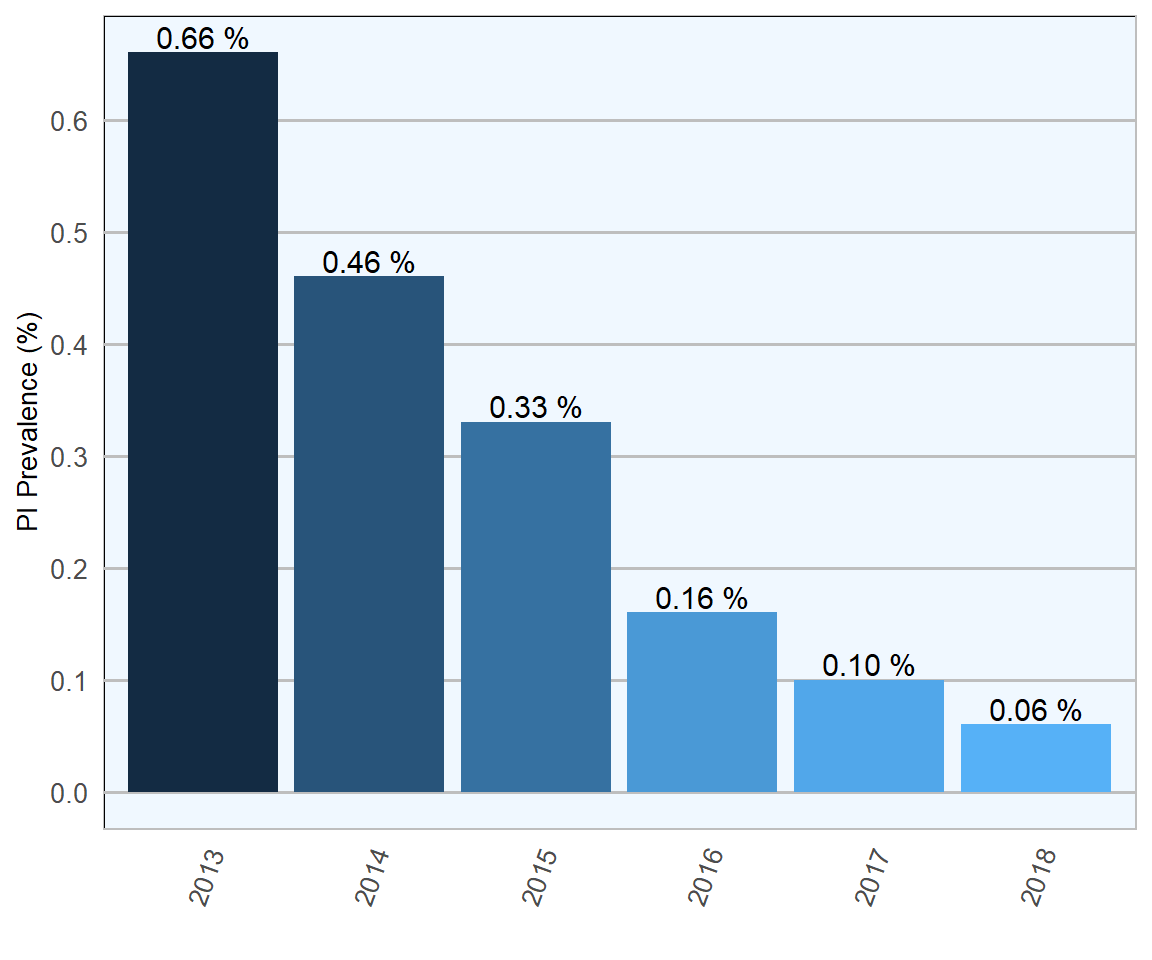
Figure 11.1: Animal- level prevalence of BVDv PI calves born during each year of the programme.
Collectively, these measures have helped to achieve the lowest numbers of PIs alive recorded in the programme to date. At the end of 2018, only 33 PIs born during the year were still alive, compared to a figure of 53 at the end of 2017.
Programme enhancements have also contributed to reducing the number of herds retaining PIs. Only 8 herds were retaining PIs at the end of 2018 (no registered date of death within 5 weeks of the date of initial test), compared to 16 herds at the same point in 2017. While this clearly demonstrates good progress, it is critical that incidence of retention is reduced to zero, with all calves being tested as soon as possible after birth and PIs removed as rapidly as possible thereafter.
Negative herd status (NHS)
A herd may qualify for negative herd status (NHS) by meeting the following requirements:
- Existence of a negative BVD status for every animal currently in the herd, on the basis of either ‘direct’ or ‘indirect’ results.
- Absence in the herd of animals deemed to be persistently infected with BVD virus in the 12 months preceding the acquisition of NHS.
11.1.1 Negative herd status (NHS)
By the end of 2017, approximately 71,000 (86 per cent) of some 83,000 breeding herds had achieved NHS. By the end of 2018, this had risen to close to 75,000 (90 per cent), with a further 7,000 only being ineligible due to presence of a small number of untested animals. While this is an important milestone for any herd, NHS also brings an economic benefit, as a number of laboratories that use the RTPCR test method offer testing at reduced costs to NHS herds.
| Year | Total | Beef | Dairy | Dual |
|---|---|---|---|---|
| 2013 | 11.3 | 8.80 | 20.3 | 13.8 |
| 2014 | 7.6 | 6.00 | 13.1 | 10.7 |
| 2015 | 5.9 | 4.50 | 10.4 | 9.3 |
| 2016 | 3.2 | 2.40 | 5.7 | 5.6 |
| 2017 | 2.0 | 1.30 | 3.8 | 4.0 |
| 2018 | 1.1 | 0.72 | 2.1 | 2.2 |
The BVD status of almost all animals (99.5 per cent) in the 83,000 breeding herds in Ireland is now known; main exception is a decreasing number of animals, born before the start of the compulsory programme in 2013, that have neither been tested nor produced a calf. At the end of 2018 the number of these animals was approximately 6,000. The majority of these animals are in beef herds, are male or have not had a calf registered to them. These animals are not required to be tested under current legislation and may presently be sold untested. It is important that these animals are tested as, on occasion, PI animals have been identified within cohort. During the summer of 2018 AHI contacted by SMS herds containing pre-2013-born animals to encourage their testing.
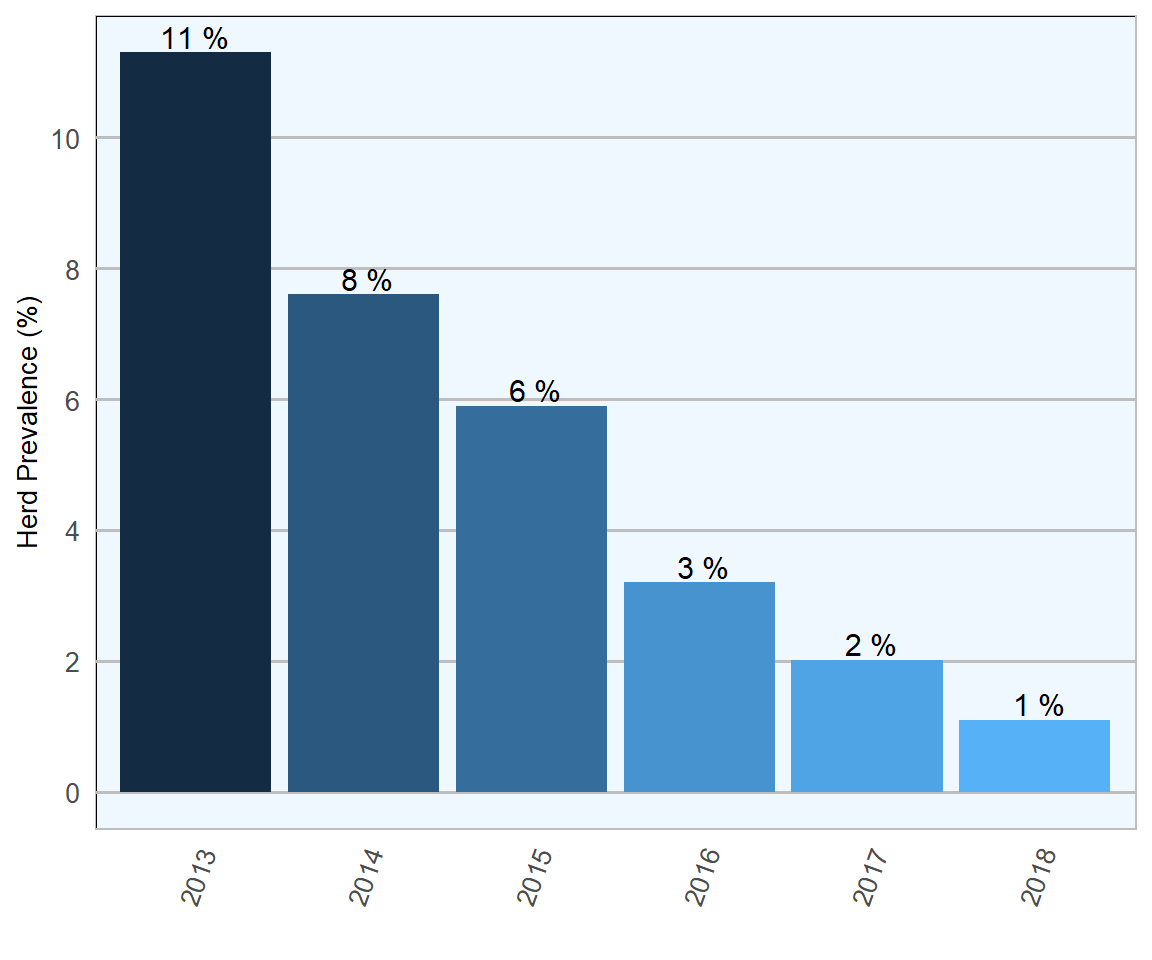
Figure 11.2: Herd- level prevalence of BVDv PI calves born during each year of the programme.
The number of animals born since January 2013 that do not have a valid test result and are, therefore, not compliant with legislation requirements has also been reduced to approximately 11,000. The majority have never been tested, whilst a small number has had an initial empty result and were not retested; most of these animals are born in 2018 (85 per cent), with remaining 15 per cent from preceding years. During 2018, DAFM issued letters to these herds notifying them of the need to test these animals.
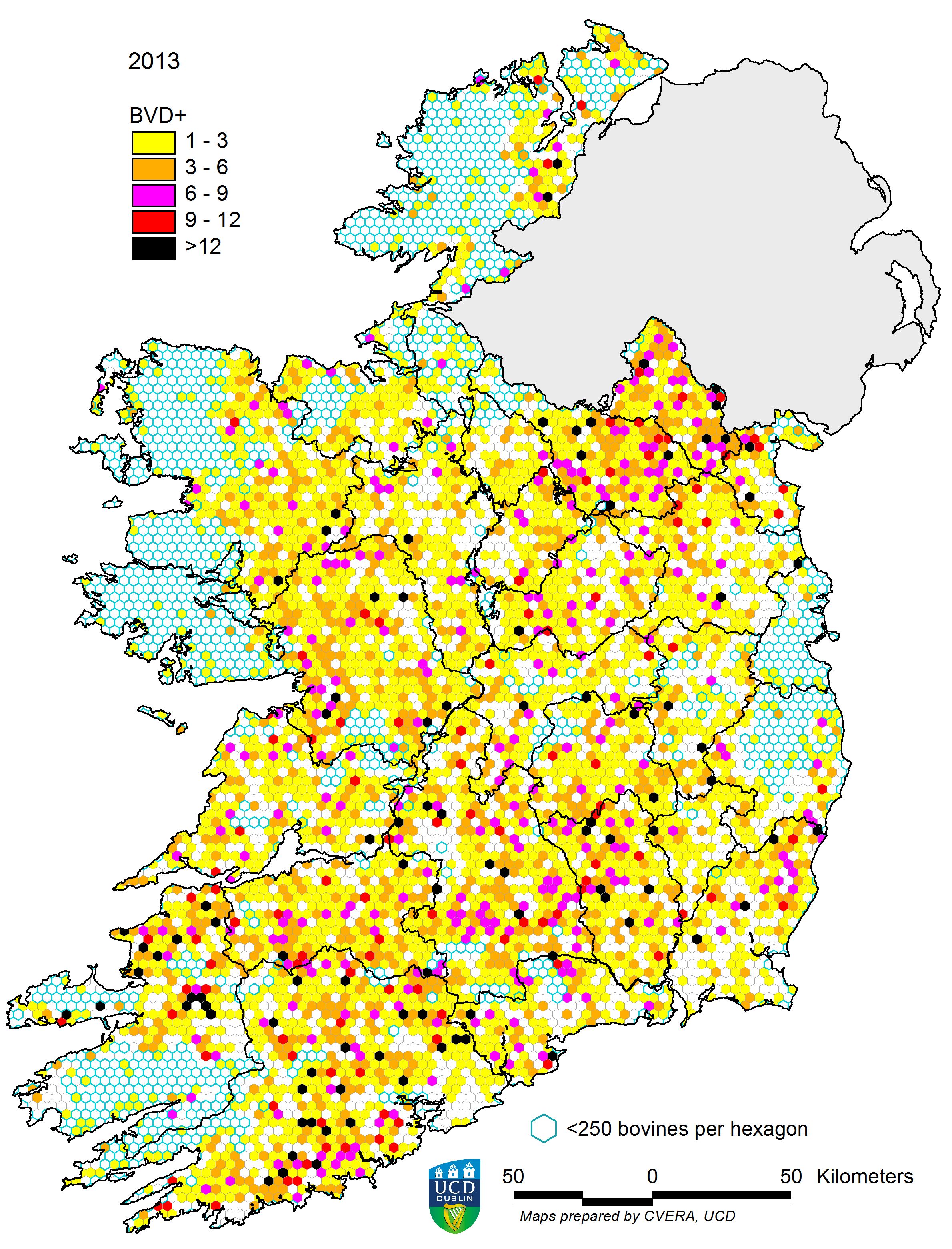
Figure 11.3: Distribution of calves born persistently infected (PI) with BVD virus in 2013. Each hexagon covers an area of approximately 10 km^2. Hexagons in which there are fewer than 250 cattle (e.g. mountainous/urban areas and lakes) are shown with blue border.
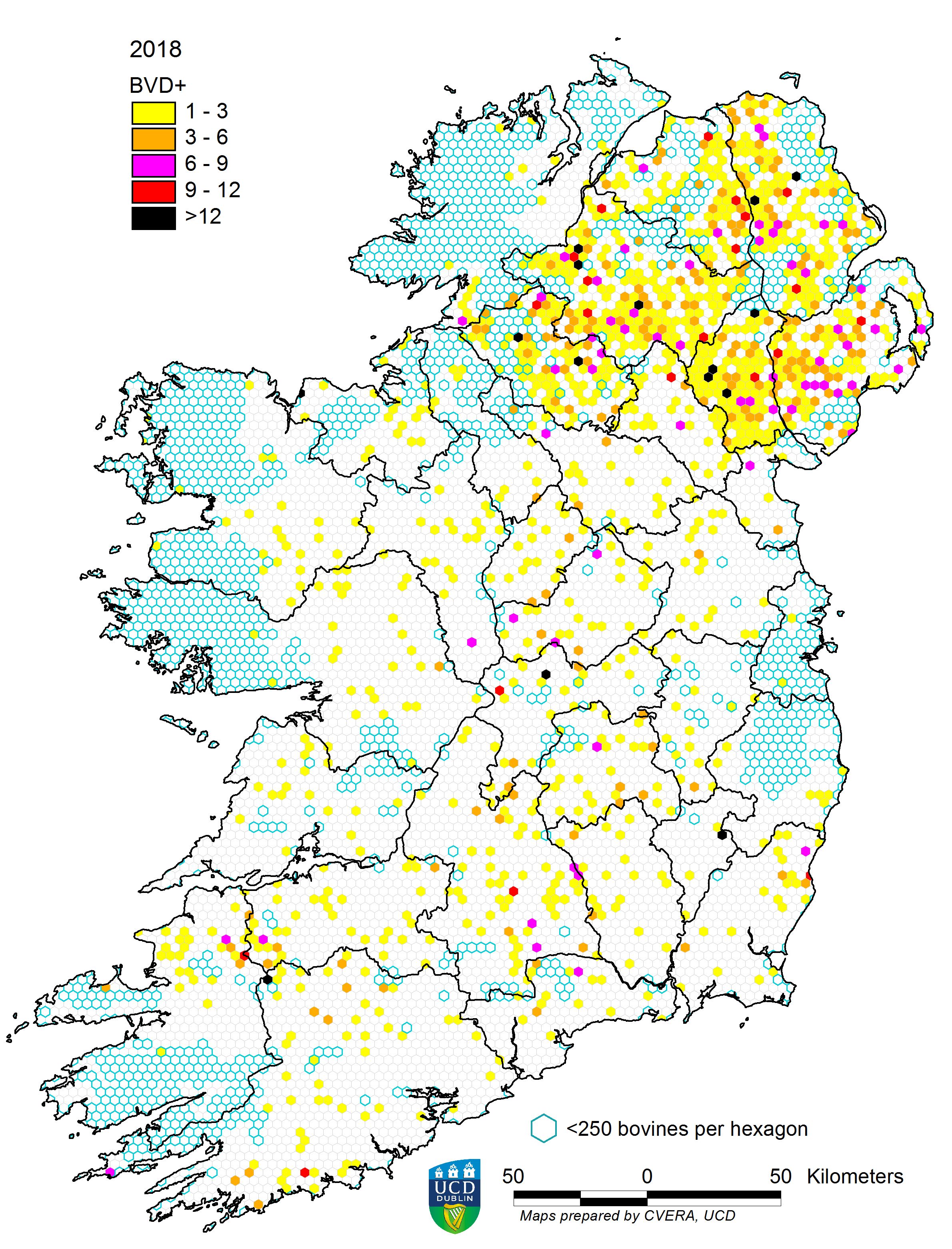
Figure 11.4: All-island distribution of calves born persistently infected (PI) with BVD virus in 2018.
11.1.2 Targeted Advisory Service on Animal Health (TASAH)
Since 2017, all herds with positive results are required to undergo a herd investigation by a trained veterinary practitioner within 3 months of the initial positive result. These investigations, conducted through the Targeted Advisory Service on Animal Health (TASAH) and funded through the Rural Development Plan (2014–2020), seek to review herd biosecurity, identify a plausible source or sources of infection, ensure that herds are left free from BVDV and agree farm-specific measures to prevent its re-introduction. By the end of 2018, 699 investigations had been completed, biosecurity recommendations provided to herd owners and results reported to Animal Health Ireland (2019c).
Preliminary analysis of these results indicated that the majority (91 per cent) of herd owners were provided with three biosecurity recommendations, most commonly related to risks of introduction of virus associated with personnel (including farmers), purchase of cattle, contact with neighbouring cattle at pasture and role of vaccination. One or more plausible sources of infection were identified in 74 per cent of herds, with a single plausible source identified in 43 per cent of herds. In 43 per cent of cases, the source was considered to be within the herd, while in 57 per cent of cases it was outside the herd. The most commonly identified plausible sources of infection were contact at boundaries, introduction of transiently infected animals without adequate quarantine, retained PI animals, personnel (including farmers), absence of appropriate hygiene measures and trojan dams. These data provide a basis for targeted biosecurity advice to prevent accidental introduction of BVD virus to herds that are currently free of infection.

Figure 11.5: Animal-level prevalence of PI calves born during each year of the programme by beef and dairy herds.

Figure 11.6: : Herd- level prevalence of PI calves born during each year of the programme by beef and dairy herds.
11.2 Infectious bovine rhinotracheitis eradication programme
Infectious Bovine Rhinotracheitis (IBR) is caused by a virus called Bovine Herpes Virus-1 (BoHV-1) that spreads between cattle and usually causes inflammation in nose and upper airways. Only primary infections are commonly associated with any clinical signs and severity can vary from inapparent to very severe. Latent infection refers to a carrier state where virus survives in an infected animal, though not causing disease or spreading). All animals that have ever had a primary infection are considered to be latently infected. Reactivation of latent infections provides a source of virus for new primary infections.
During 2018, the IBR Technical Working Group (TWG) developed and implemented the first phase of a pilot IBR Programme (Animal Health Ireland (2019b)) for herds participating in Phase Three of the Teagasc/Irish Farmers journal BETTER Farm Beef Programme.
This pilot comprised application of an IBR on-farm veterinary risk assessment and management plan (VIBRAMP), sampling of herds and provision of biosecurity and disease control advice.
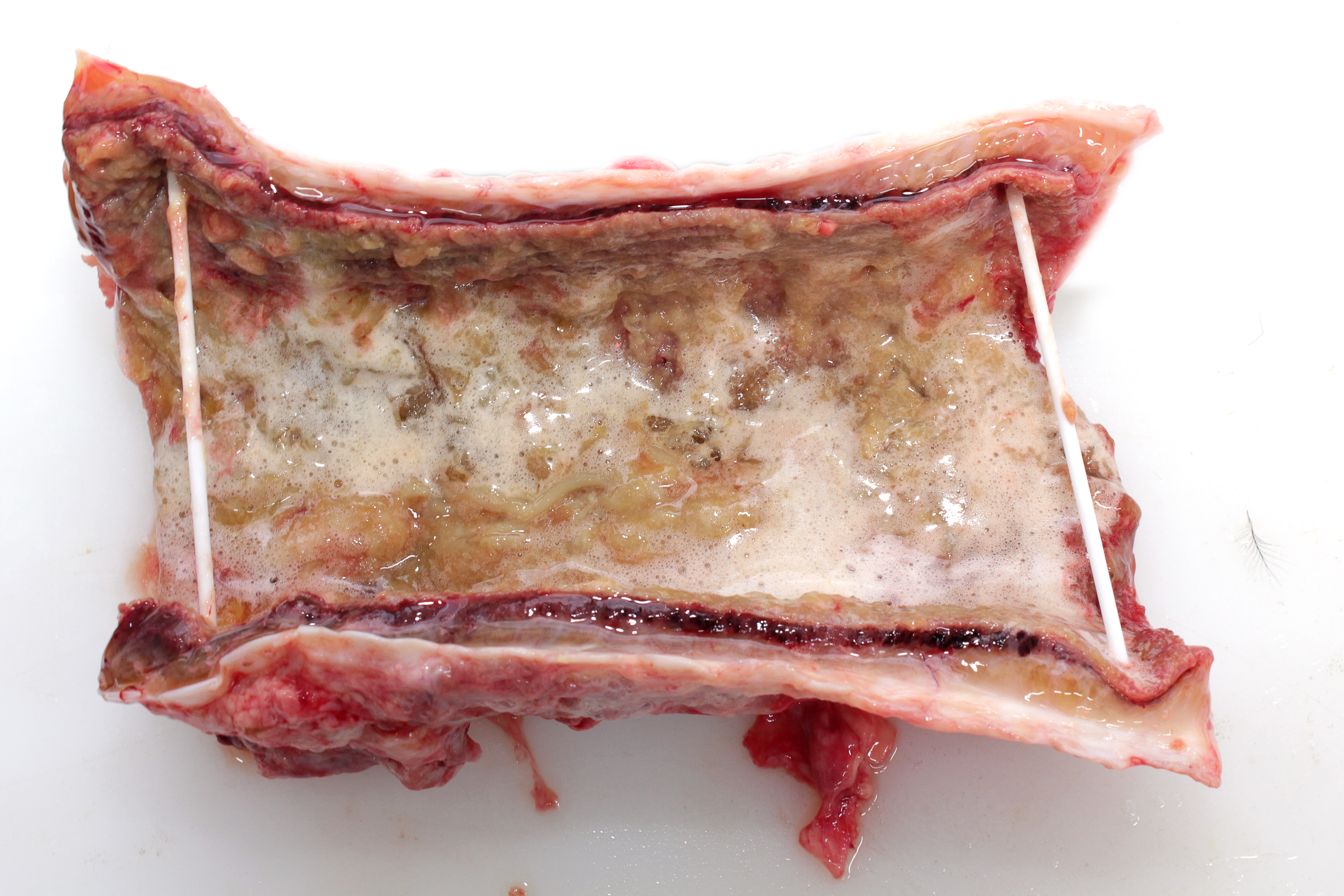
Figure 11.7: Fibrinonecrotic tracheitis caused by Infectious Bovine Rhinotracheitis (IBR). Photo: Cosme Sánchez-Miguel.
VIBRAMP consists of a questionnaire that captures details related to farm structure, animal movements, biosecurity and vaccination history, with vet and herd owner agreeing to up to three changes to improve biosecurity. A group of private veterinary practitioners was trained on this disease, application of the VIBRAMP and interpretation of test results. This was a mandatory requirement for vets to be able to participate in the programme.
In addition to VIBRAMP and formulation of biosecurity recommendations for those farms, the pilot programme included partial sampling of herds for IBR. Herds were tested by applying a ‘snap shot’ which required to sample 30 randomly selected over 9 months-old animals that are used, or intended to be used, for breeding. Samples were tested at DAFM Blood Testing Laboratory in Cork with an IBR gE (marker) ELISA. This sampling allowed a statistically-based estimation of the proportion of IBR-positive animals in a herd and formulation appropriate recommendations to farms in terms of IBR-control.
By the end of 2018, all of herds were sampled and tested and most had completed VIBRAMP. Results from this testing will be used to evaluate herd status, identify risk factors associated with presence of infection, identify common biosecurity risks and make informed decisions on further testing and vaccination. For example, testing of all animals in herds with a negative snap shot result would be justified, allowing identification and removal of any carrier animals and enabling herds to move rapidly to freedom from disease status. Information generated will also be used by the IBR TWG to inform options for a future IBR eradication programme for Ireland.
References
Animal Health Ireland. 2019c. “National Eradication Programme.” http://animalhealthireland.ie/?page_id=220.
Animal Health Ireland. 2019b. “IBR Introduction.” http://animalhealthireland.ie/?page_id=375.
A cooperative effort between the VLS and the SAT Section of the DAFM